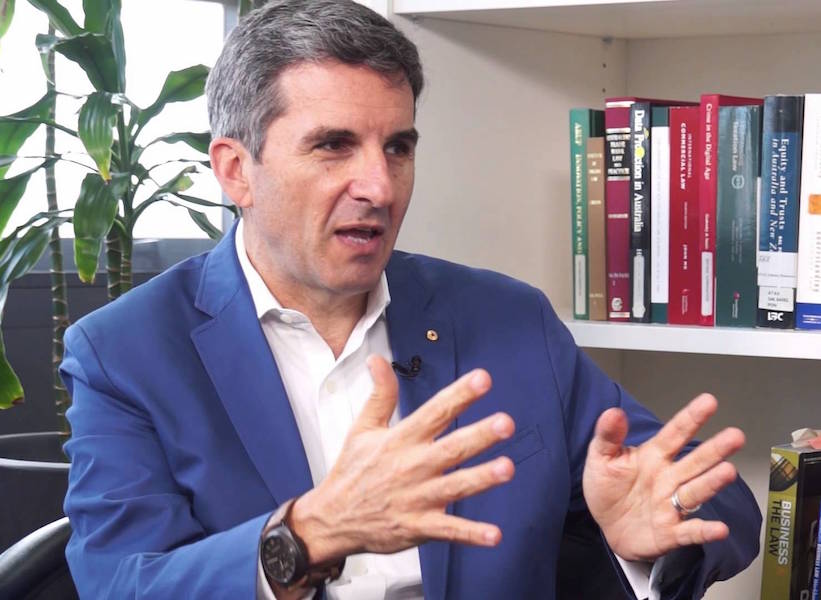Daniel Petre has a stark warning for Australia; we need to take innovation very very seriously, very very soon.
“I think this is the last chance we have got. There will be extraordinary upheaval both positive and negative in the next 12 years, and if we don’t create the substructure, the skills, innovation best practice … we are destined to have a very different lifestyle in Australia – it is that serious,” Mr Petre told InnovationAus.com.

Mr Petre is a member of the Innovation and Science Australia board which has today released its report Australia 2030: Prosperity through Innovation.
He has a storied history in Australia’s technology sector, rising from a Burroughs product manager in the early 1980s, to become managing director of Microsoft Australia, chair of ninemsn and PBL’s eCorp. He is now a venture capitalist partner in AirTree Ventures.
And he thinks we are running out of time.
“We have to run faster because we are coming from behind in many ways. Because we are coming from a comfortable country with a lot of oligopoly industry that didn’t really have to compete that hard.”
The ISA report is well researched, well written and makes many excellent recommendations. But it is still a report, and requires government to take action if it is to have impact. How confident is Petre of that?
“It has the support of the Prime Minister and Ministers in Canberra. I think the challenge for the government is that there are parts of government that don’t really appreciate the binary nature of innovation,” he said.
“It’s not like there is a steady state option and everything goes on nicely. It will either do a great job and try and improve the lot of many or we will have a serious economic crisis on our hands.”
He also acknowledged that innovation is sometimes dismissed as a “tech” issue rather than something which impacts every job, every industry.
Mr Petre lamented the lack of resonance that innovation has had across the nation.
While the $1.1 billion National Innovation and Science Agenda has had clear benefits he said that; “The problem is it’s not being debated or discussed, particularly in government – innovation wasn’t resonating with the populace.”
To achieve traction Mr Petre said; “We need to tell Australians that if we don’t do anything we are screwed. If we don’t, we are actually not going to have jobs.
“Government don’t want to go to the Australian population and say ‘there is a dark side to this if we don’t do the right thing’. The government ran away from it because the idea didn’t resonate with the electorate.”
But he said that international innovation efforts such as those underway in Europe, in the US – and in China, where the government had promised to spend $1 billion on research into artificial intelligence alone – should reinforce the need for urgent action.
Mr Petre said that the two biggest problems for Australia were the “extraordinarily low” rates of corporate R&D being undertaken, and access to skills – both to meet current needs and in terms of developing a pipeline for the future.
The ISA report notes that Australia currently ranks 20th in the OECD for R&D investment, with business investment in R&D measured at 1 per cent of GDP in 2015 compared to Israel’s 3.6 per cent, Germany and the US on 2 per cent, and China at 1.6 per cent.
“Australian companies do not spend much on R&D because they can lazily rely on oligopolies in the market to do quite well,” he said. National oligopolies however can be eroded rapidly by digitally charged global competitors; witness the Amazon effect on retail.
Beefing R&D spending by local industry should be the number one priority, said Mr Petre.
The ISA report makes a series of recommendations, including directing additional Government R&D funding toward areas of national importance and introducing R&D spending boosts for organisations which collaborate with universities and research agencies.
Solving the skills issue will take longer and rely on targeted skilled migration initiatives and educational reform, though the latter may not bear fruit for decades.
Mr Petre however is clear about the need for root and branch reform of school education in order to lift the skills level of the nation.
“The biggest single determinant of change will be the quality of teachers. In the medium term increasing the Atar to enter teaching will be a dramatic help.
“It has been ridiculous that someone who really didn’t do that well at school can get into teaching. How does that work?
“The problem is that next year’s intake into teaching which has an 85 or 90 ATAR – which is the equivalent of the Finnish system – that is going to help in five or six years’ time, but not have immediate impact. Sadly that is going to take a long time to flow through.
“In the shorter term we need to make changes to allow principals and school leaders to move on those teachers who are not up to the task and provide teachers with a lot more training to be more effective and productive.”
He said there needed to be more pressure placed on teaching unions to drive reform and quality through the profession, and that Australia’s vocational education and training sector needed to be restored.
Do you know more? Contact James Riley via Email.

